Food's way forward: Thinking global, eating local
An exploration into the future of food, from farm to table and back to the soil


A farmer and his family work on their cauliflower field in the outskirts of ChandigarhImage: Ajay Verma / Reuters
The way we eat is changing the planet. It’s not just the looming world hunger crisis. The increase in greenhouse gases, pollution and ill health—all of these are intrinsically linked to our eating habits. In fact, in just the last two decades, India’s fascination with all things foreign has denuded the wealth created by generations of healthy Indian cooking. Simply put, each time we adopt a western food fad and favour a leaf, grain or vegetable that’s not indigenous to the Indian soil, we trigger a problem. Fast food and processed food demand less attention in the kitchen. And with the meat and poultry markets already industrialised and vegetable shopping now available online, the future of food has never looked more impersonal. Squeezed for time, and happier with easier options, these quick alternatives seem far more appealing than ghar ka khaana.
But change is coming. Slowly. For one, a handful of chefs in India are breaking away to rally behind sustainability. This, they explain, does not mean a vegetarian or vegan way of life, nor is it restricted to food alone. It is a process of giving back to the local economy and to the environment. “We are so used to relying on unseasonal and foreign produce instead of looking into our own backyard,” says Manu Chandra, head chef of Toast and Tonic, a Bengaluru-based restaurant that sources ingredients from local markets and boutique farmers to highlight the bounty of Indian produce. 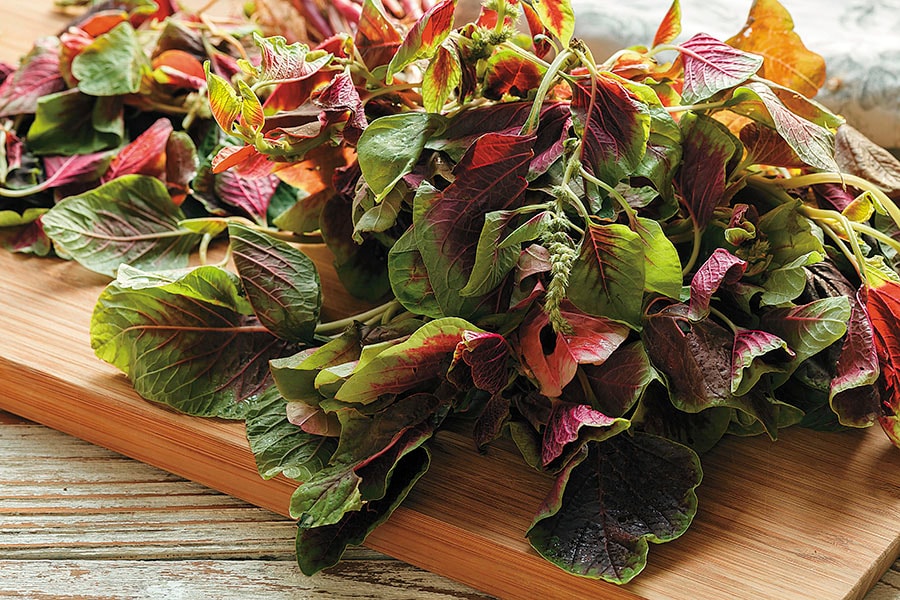 Red Amaranth (Image: Shuttestock.com)The first step towards a more viable food future is recognising where your food comes from, and what your country has to offer. In France, the landscape of food is changing because an increasing number of chefs are turning to vegetarian menus to break out of the classic mould of fish appetisers, meat mains and desserts. In India, we have an added advantage with a wide array of vegetables and greens on offer, so do we really need to create demand for an exotic leaf like kale or a grain like quinoa? There are so many more nutritious alternatives: Consider Malabar Spinach or Red Amaranth in place of kale and lapsi (broken wheat), respectively, or pearl barley instead of quinoa. The country has a cornucopia of wild offerings available freely, as opposed to cities like Dubai that have to import a large chunk of their foods. Also, growing exotics may be doing more harm than good to our ecosystem.
Red Amaranth (Image: Shuttestock.com)The first step towards a more viable food future is recognising where your food comes from, and what your country has to offer. In France, the landscape of food is changing because an increasing number of chefs are turning to vegetarian menus to break out of the classic mould of fish appetisers, meat mains and desserts. In India, we have an added advantage with a wide array of vegetables and greens on offer, so do we really need to create demand for an exotic leaf like kale or a grain like quinoa? There are so many more nutritious alternatives: Consider Malabar Spinach or Red Amaranth in place of kale and lapsi (broken wheat), respectively, or pearl barley instead of quinoa. The country has a cornucopia of wild offerings available freely, as opposed to cities like Dubai that have to import a large chunk of their foods. Also, growing exotics may be doing more harm than good to our ecosystem. 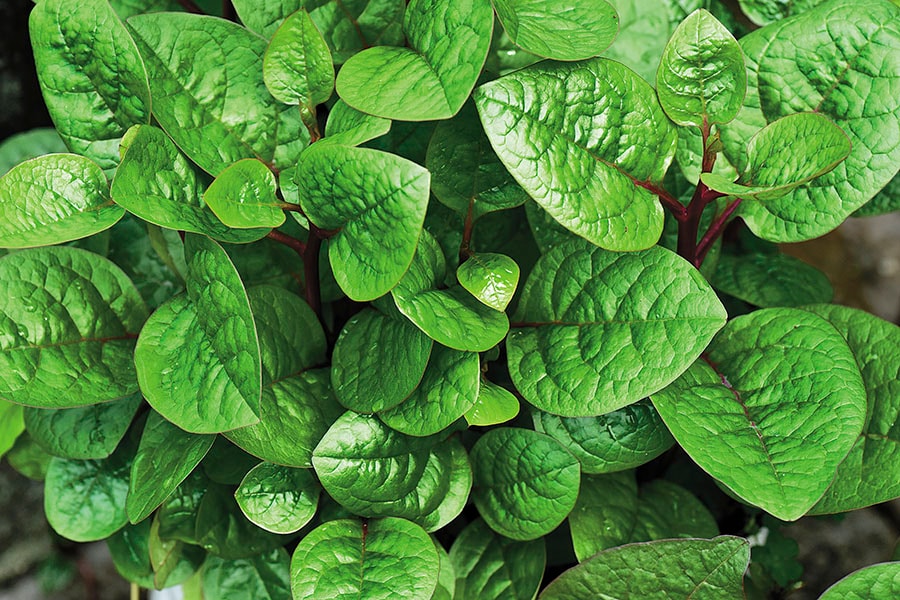
Malabar Spinach (Image:Ajayptp / Shutterstock.com)“Soil is not dirt, as we are taught to look at it. It is also humus, the Latin word for life,” says Kumud Dadlani, an alumna of the University of Gastronomic Sciences in Italy. “If a farmer grows a crop that is not native to the soil, it might cause erosion. This is why it is crucial for chefs to work closely with farmers.” 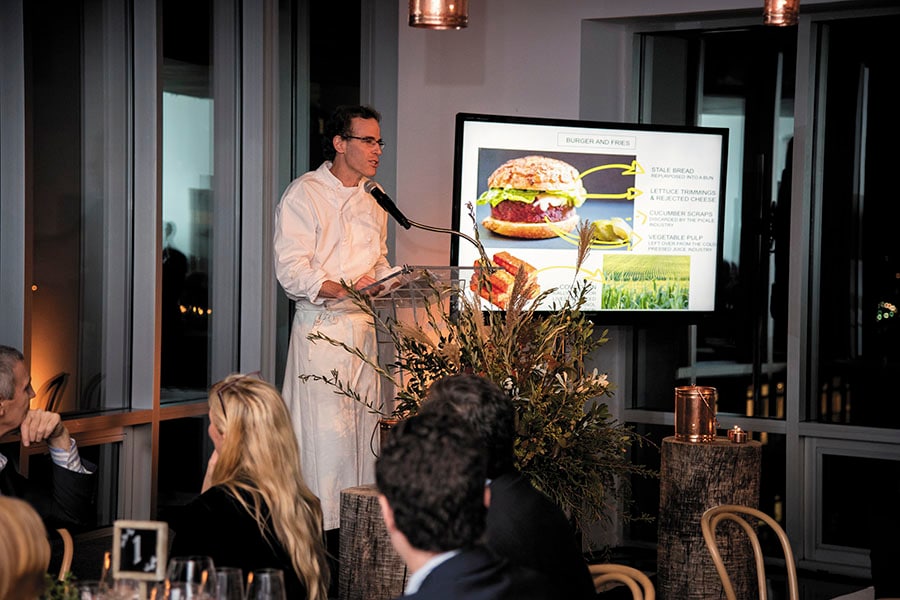 In an initiative called WastED, chef Dan Barber of New York served up wasted, misshaped and bruised bits of food refashioned as dishes (Image: Dave Kotinsky / Getty Images)
In an initiative called WastED, chef Dan Barber of New York served up wasted, misshaped and bruised bits of food refashioned as dishes (Image: Dave Kotinsky / Getty Images)
Dan Barber, the chef and co-owner of Blue Hill in Manhattan and Blue Hill at Stone Barns in Pocantico Hills, New York, talks extensively about soil in his book, The Third Plate: Field Notes on the Future of Food. Barber, who was named one of the world’s most influential people by Time magazine in 2009, writes about plant vigour and weeds: “The soil has a language, and its language is at least partly expressed through what weeds are growing and not growing, what’s strong and what’s weak. The trick is to learn the language
of the soil.”
The pressures of growing food rapidly and mindlessly was a by-product of the Green Revolution of the 1960s, and, today, after four decades, you may find rich farmers in Punjab, but you will also find the ‘cancer train’, which goes from Bhatinda in Punjab to Bikaner in Rajasthan everyday, carrying hundreds of kidney and cancer patients to the cancer centre at the Prince Bijay Singh Memorial Hospital. (The patients claim that apathy at local government hospitals and cheaper medical facilities in Bikaner force them to travel this far.)
Soil poisoning is at the epicentre of this malaise in Punjab the other, the anti-GMO (genetically modified organisms) experts say, is the seed. GMO seeds are unnatural, as opposed to hybrid varieties that either occur naturally or can be crossed by humans.
It would help if chefs involve themselves in the core growth process of the farmer. While it may not be immediately possible to work directly with small-scale farmers, establishing relationships with multiple co-operatives in various villages across the country can enable the opening of trade lines between restaurants and farms. This process, once fruitful, would naturally engage more farmers from neighbouring sectors. Multiple chefs can band together and take initiative and responsibility for the food that farmers are growing for their guests. The optimal way to do that is by building on a farmer’s existing seasonal crop cycle and advising multi-planting strategies, instead of demanding crop that is not native to the farmer’s soil. “We may not have taken concepts like crop rotation, monoculture and companion planting to our menus yet, but I hope that soon all restaurants will follow it,” says Dadlani.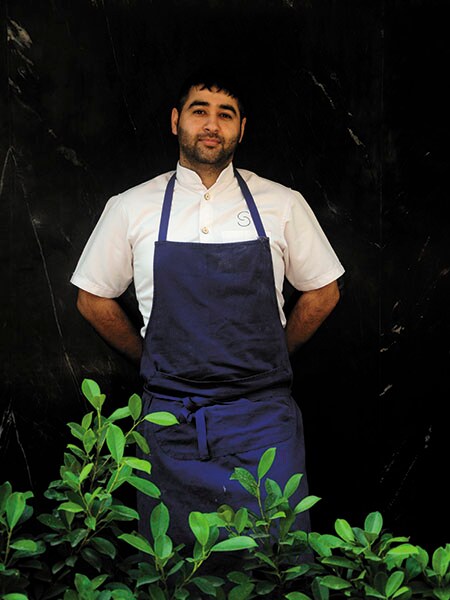 Chef Prateek Sadhu of Masque in Mumbai follows the farm-to-fork trend by not only sourcing his ingredients from local farmers but also explaining their significance to his diners
Chef Prateek Sadhu of Masque in Mumbai follows the farm-to-fork trend by not only sourcing his ingredients from local farmers but also explaining their significance to his diners
The newly-opened restaurant in Mumbai, Masque, operated by chef Prateek Sadhu, is among those riding the farm-to-fork wave. After having previously worked with Noma (Copenhagen), The French Laundry (California) and the Bengaluru outpost of Le Cirque, Sadhu engages farmers across the country to not just source his ingredients, but also to highlight their provenance to the diners. Ingredients like wild apricots, sea buckthorn berries, wild gooseberries, all local to India, can be found on his menu that changes every 10 days. “We get our buckwheat from Himachal Pradesh. The same farmer gives us beans later, and then a vegetable maybe. In this way, we celebrate the farm,” explains Sadhu.
[bg]Local ingredients and local cuisine go hand-in-hand. Our forefathers never wasted as much as we do today [/bg]
Local ingredients and local cuisine go hand-in-hand. Our forefathers never wasted as much as we do today no cut of animal was considered lesser than the other, and no food scrap was discarded mindlessly. Goan stews have followed the nose-to-tail tradition to add depth of flavour to festive curries like sorpotel Bengalis celebrate their leftovers with dishes like lau/alur khosha bhaja (fries of leftover gourd and potato peels) and muri ghonto that uses both the head and tail of bony fish like rohu. Even every last bit of trees such as coconut and banana are utilised. When we cut meat for food, certain middle-cuts are preferred, and the rest are usually ground into feed. But it is imperative that we respect the whole animal, nose-to-tail, offals and all. “Go ahead and eat the tenderloin of the chicken for the rest of your life,” says Chandra of Toast And Tonic, “but know that there will be an impact of this on your offspring or on theirs, and then it will be too late.”
Indians have been aware of the health benefits of turmeric and the nourishing power of bone broths generations before the West woke up to it. This is reason enough to use local culinary practices as handbooks to extract the maximum flavour and benefit from our food. Each local cuisine brings its own set of nuances to the same set of ingredients in the market. 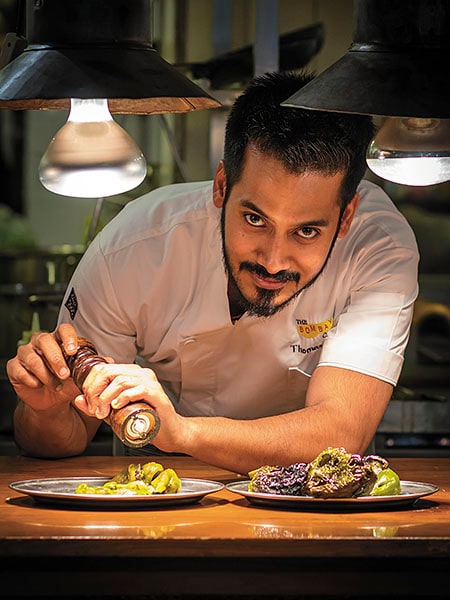 Chef Thomas Zacharias of Mumbai’s The Bombay Canteen runs an Instagram page highlighting the ingredients he finds on his market walks
Chef Thomas Zacharias of Mumbai’s The Bombay Canteen runs an Instagram page highlighting the ingredients he finds on his market walks
Mumbai’s The Bombay Canteen, where the kitchen is run by chef Thomas Zacharias, has stayed on the path of sustaining cuisines and cultures from India. It sources its ingredients locally and the chef has an informative Instagram page where he highlights the ingredients he finds on his market walks. “I can’t just be sourcing bamboo rice from West Bengal or topli paneer from Mumbai,” says Zacharias. “I need to use both the off-beat as well as the everyday unglamorous vegetables in my menu.” The restaurant’s packaging includes recycled wooden spoons that go into pouches made of newspapers, all fastened in a biodegradable potli. At The Bombay Canteen, sustainability also has a lot to do with creating a great work environment for the staff as well as their suppliers. “Just having 75 people working with the restaurant, we are touching 75 lives, and they will in turn touch many more with the same philosophy,” says Zacharias.
The need of the hour is to slow down and reassess food choices. For instance, is there a requirement to import seafood when the fresh catch can stand in just as easily? Consider the ecological footprint of eating sushi in a landlocked city. There may be concerns about a certain species of tuna going extinct, but do we know about other varieties of tuna available locally?
In the Food Sustainability Index created by the Economist Intelligence Unit (EIU) in association with the Barilla Centre For Food & Nutrition, India ranks last in terms of nutrition and had the second-highest prevalence of under-nourishment cases. Asia alone is responsible for half the world’s food loss, and in India 37 percent of harvested crop is lost due to poor handling and storage conditions. Take into account the remaining crop and it’s not enough to feed a whole nation.
Growing up, my mother insisted that not a single grain of rice should remain on my plate when I was done eating. Just a few grains drenched in the remaining bhaji, we were told, were enough to line the stomachs of those less privileged than us. This is a simple philosophy that has echoed in homes around India for generations. A similar approach has to be adopted by restaurants, particularly towards the massive amounts of food waste they generate. Composting that waste and giving it back to farms will keep all the food in the cycle—farm to table, then table to farm. For instance, Hotel Marine Plaza in Mumbai turns all their green biodegradable waste into manure and supplies it to farms.
The sustainable movement with relation to restaurants is very new in India, and does appear to be an expensive undertaking. “If everyone is going to be chasing the Rs 299 all-you-can-eat buffet, we won’t see any change. If you want a little more quality, it’s going to cost a little more because it’s impossible to support small-time farmers who don’t work on the same margins as industrialised farmers do,” says Chandra. People are so used to paying less for their food that for a restaurant to sustain itself, it will need to charge more. 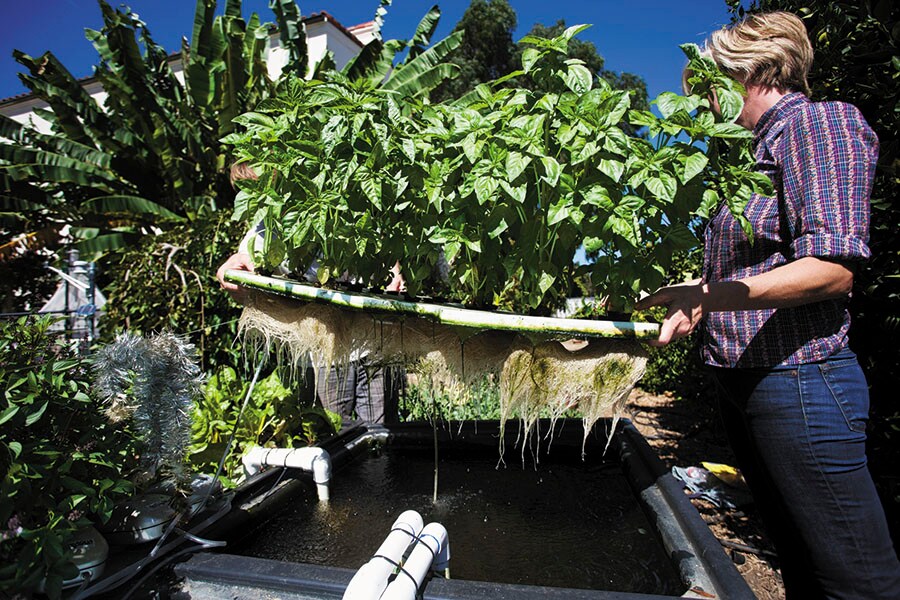 The process of aquaponics at The Perennial in San Francisco helps close the food waste cycle: Here, food scraps are fed to worms and the worms to the fish that fertilise the water. Eventually, the water gets pumped into the soil using filters nurturing the plant (Image: Joe Kohen / Getty Images)
The process of aquaponics at The Perennial in San Francisco helps close the food waste cycle: Here, food scraps are fed to worms and the worms to the fish that fertilise the water. Eventually, the water gets pumped into the soil using filters nurturing the plant (Image: Joe Kohen / Getty Images)
It takes time to turn a trend into a movement, and this sustainable movement towards a zero foodprint (carbon footprint emissions from restaurants) is a slow but necessary one. Restaurants like Noma, Mission Chinese Food (San Francisco), Prime Meats (New York) are already an active part of this, and a new addition, The Perennial in San Francisco, started by restaurateurs Karen Leibowitz and Anthony Myint, is being touted the most sustainable restaurant in America. The restaurateur couple started out by asking themselves the most fundamental question: ‘What kind of world are we bringing our child into?’ At their restaurant, they use aquaponics to close the food waste cycle: Here, food scraps are fed to worms during the composting stage, then the same dried worms are fed to fish who fertilise the water, and this gets pumped into the soil using filters that help nurture the plant.
Similarly, Dan Barber’s initiative WastED served up wasted, misshaped and bruised bits of food refashioned as dishes. The pop-up at Blue Hill in Greenwich Village in New York involved small-scale producers and restaurant suppliers with a considerable amount of waste on their hands, which was then repurposed and sent out as dinner—a creative epiphany that speaks volumes about the menu of the future.
“Consider the Eggs Kejriwal,” says Dadlani, “essentially a very bambaiya sandwich of eggs, cheese and onion, that has now caught on among restaurants. On a more macro scale, a menu of the future for me is one where all chefs are presented with the same crops to play with and each brings something different in terms of techniques, presentation, and revolutionises the way we use an ingredient. Wouldn’t it be a wild idea to see methi on a European menu?”
First Published: Feb 18, 2017, 08:57
Subscribe Now(This story appears in the Feb 11, 2011 issue of Forbes India. To visit our Archives, Click here.)